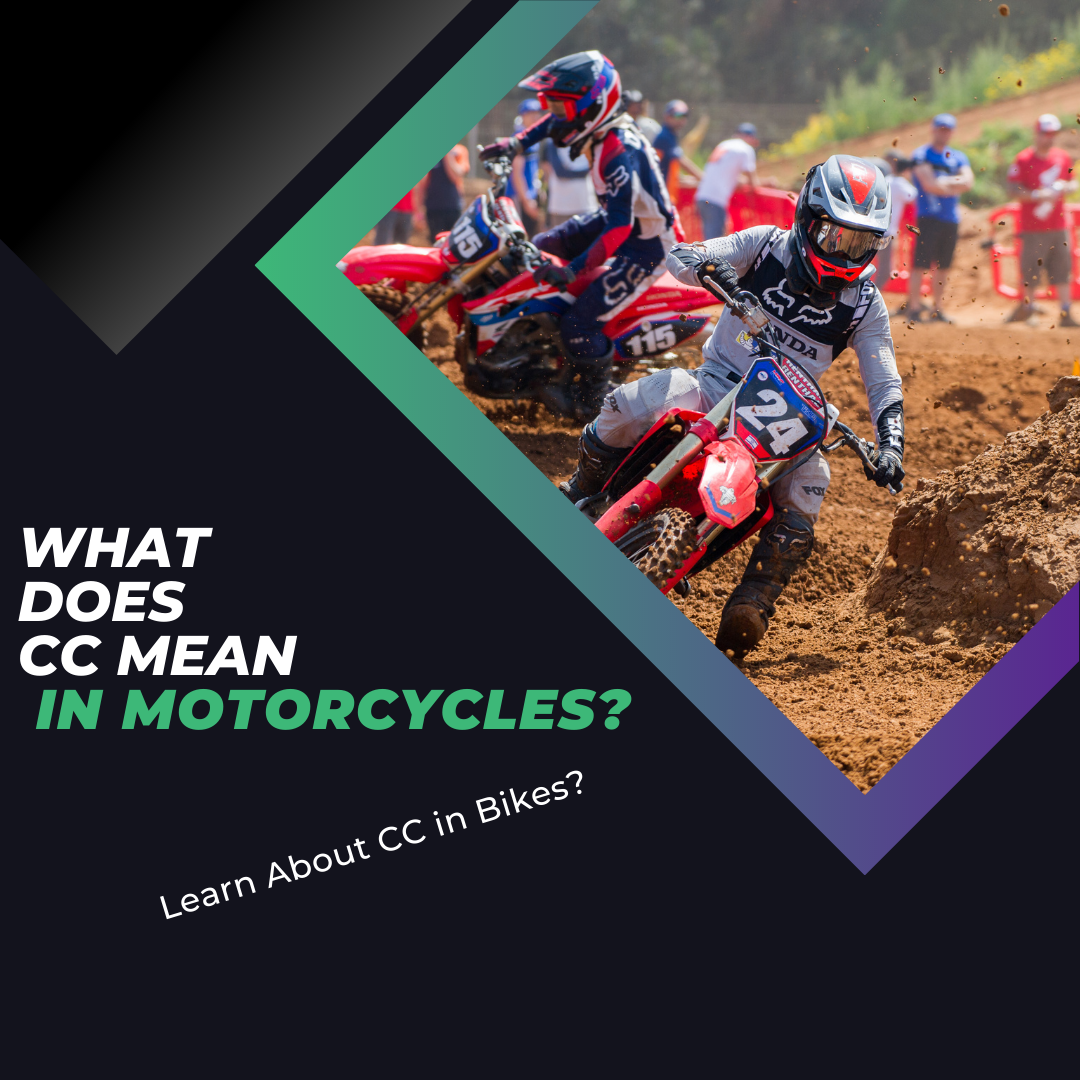Published: June 29, 2023
Updated: March 21, 2025
What Does CC Mean in Motorcycles? Your Guide to Bike Engine Sizes
Ever scratched your head over “CC” while shopping for a motorcycle? Whether you’re a newbie or a seasoned rider, this term pops up everywhere.  Let’s break it down and see how it shapes your ride.
Let’s break it down and see how it shapes your ride.
What’s “CC” in a Nutshell?
“CC” stands for cubic centimeters—it’s the size of a motorcycle’s engine chamber. Bigger CC means more room for fuel and air, pumping out more power and speed. But it’s not the whole story—weight, horsepower, and design matter too.
Watch this quick explainer:
Why CC Matters
CC measures engine volume—think of it as the heart of your bike. More CC packs a bigger punch, but it’s been a key spec since the 1920s when racing classes needed a standard. Today, it’s still a go-to for power, licensing, and insurance.
CC Sizes and What They Mean
Engine sizes vary wildly—here’s a rundown:
Motorcycle Engine Sizes
| Engine Size (CC) | General Characteristics | Popular Models |
|---|---|---|
| 50cc | Light, beginner-friendly, super fuel-efficient—great for short commutes. | Honda Metropolitan, Vespa Primavera 50 |
| 125cc | Easy to handle, balances power and efficiency—perfect for city riding. | Honda CB125F, Yamaha YZF-R125 |
| 250cc | More kick, still manageable—good for longer trips or newbies stepping up. | Kawasaki Ninja 250, Honda CBR250R |
| 600cc+ | Powerful, built for speed or distance—needs skill to tame. | Yamaha MT-07 (689cc), Harley-Davidson Road Glide (1868cc) |
Tip: Check out how fast mopeds go by CC.
CC and Performance: Power vs. Efficiency
CC drives power, speed, and fuel use—here’s how:
Engine Sizes and Average Fuel Efficiency
| Engine Size (CC) | Average Fuel Efficiency (km/L) | Notes |
|---|---|---|
| 100-125cc | 60-70 | Top-notch for city sipping. |
| 250-300cc | 30-40 | Solid for highways. |
| 600-1000cc | 15-25 | Power over pennies. |
Heads Up: Real mileage varies—riding style, terrain, and maintenance tweak these numbers.
Bike Types by CC
Different rides, different CCs:
Motorcycle Types and Typical CC Range
| Motorcycle Type | Typical CC Range |
|---|---|
| Scooters | 50cc-150cc |
| Learner Bikes | 125cc-250cc |
| Cruisers | 750cc-1900cc |
For Kids: Picking a kids’ bike? 50cc-125cc suits ages 3-14, depending on height and skill. See our 50cc guide.
Choosing Your CC
Practical Tips for Choosing the Right CC
- Newbies: Start with 125cc-300cc—easy to learn on.
- City Riders: 50cc-250cc for zippy commutes.
- Touring Pros: 600cc+ for long hauls.
- Budget: Bigger CCs hike fuel and insurance costs.
- Test It: Ride different sizes to feel the fit.
Wrap-Up
CC is your bike’s power pulse—bigger means faster, but smaller sips less fuel. Pair it with weight, design, and your needs to find the perfect ride. Ready to roll? Explore our kids’ motorbikes!
Frequently Asked Questions
Does higher CC mean faster?
Usually, yes—more CC boosts power and speed. But weight and aerodynamics can shift the game.
What’s a good CC for a motorcycle?
Depends on you—125cc for beginners, 600cc+ for pros or touring. Match it to your skill and ride style.
Do I need a special licence for higher CC?
In the UK, yes—A1 for up to 125cc, A2 for mid-range, A for unlimited. Check local rules.
Got Questions? We’ve Got Answers! 🏍️
Love this guide? Ride over to RiiRoo.com or hit our Live Chat!





Share:
How Fast Does A 125cc Pit Bike Go?
How to Service Your Quad Bike at Home (Step-by-Step Guide)